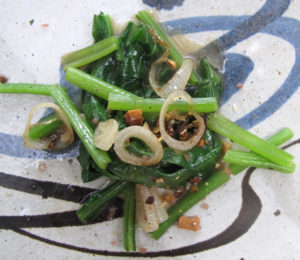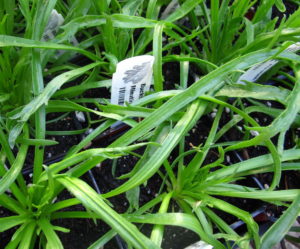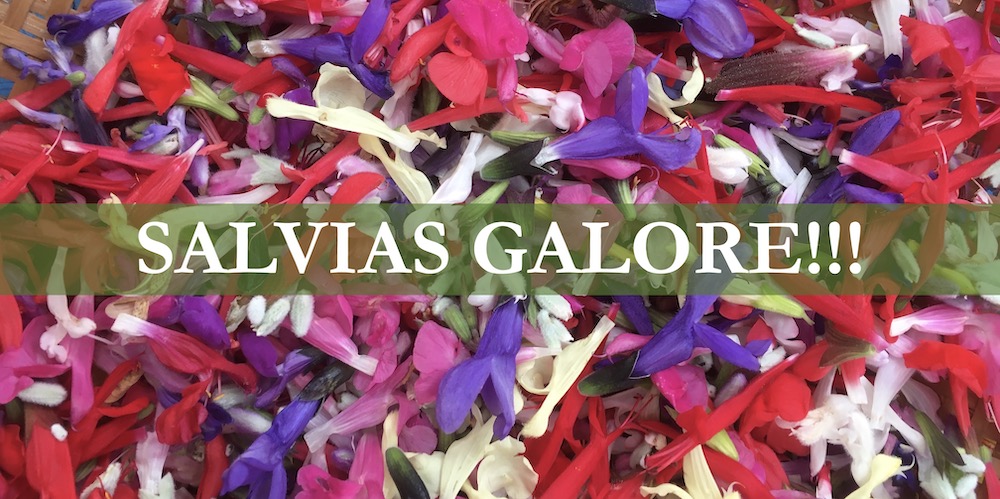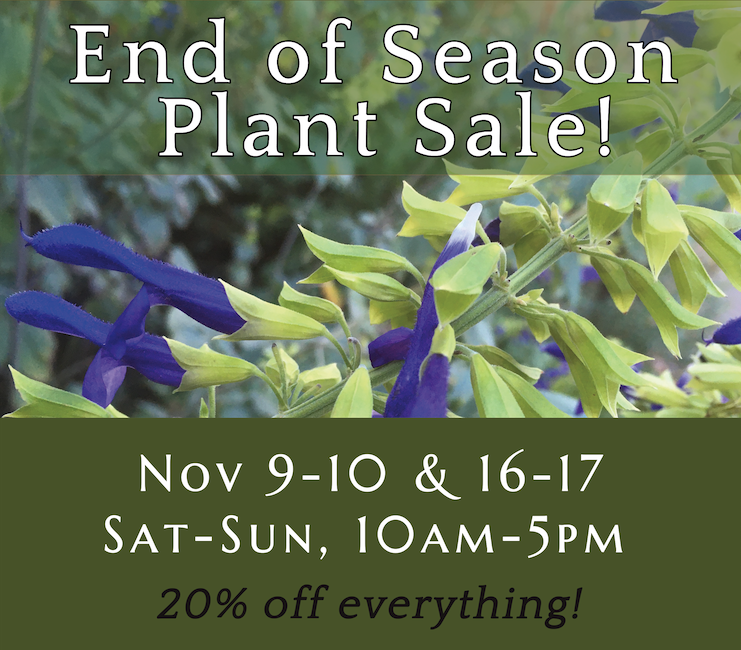Our non-profit nursery is far more than a business – it is a mission-driven project promoting biodiversity as nature’s failsafe strategy for resilience both in our gardens and in the greater world. As the nursery season draws to a close, we want to thank all our customers and especially our donors and loyal Friends of the Nursery for supporting OAEC’s Mother Garden Biodiversity Program. Please join us!
Nov 9-10 & 16-17
End of Season Plant Sale
20% off for the general public
40% for Friends of the Nursery
Donate to Friends of the Nursery now
The Radical Acts of Growing Diversity and Saving Seeds: An Interview with Doug Gosling by Bioneers
“Growing plants and saving seeds are some of the most provocative, democratic, and radical acts one can take towards reconciling the modern world’s alienation from the earth and the miracle of life.” Read the article


Perennial Greens – Plant Now for Healthy Winter Meals!
Sea Beets, the perennial ancestor of chard and beets, have the concentrated essence of chard, along with the nutrient density you’d expect of the wild green superfood that it is! As its name implies, it is perfectly acclimated to our coastal climate and tolerates salty soils. With this easy-to-grow addition to your edible landscaping, you’ll be able to whip up a simply prepared helping of greens to go with hearty meals this winter.
 Recipe: Sautéed Sea Beet Greens with a Little Bit of This and a Little Bit of That
Recipe: Sautéed Sea Beet Greens with a Little Bit of This and a Little Bit of That
Serves Two. Prep time: 10 minutes.
Sauté a thinly sliced medium-size shallot in a generous tab of butter until translucent. Put aside. Sauté stems cut into 2 inch sections until slightly softened. Add a handful of freshly harvested young Sea Beet leaves and sauté until wilted. Garnish with sautéed shallots, bits of toasted almonds, fresh ground pepper and chunky salt. Drizzle with pan juices. Yummo! Order the OAEC Cookbook

Minutina, also known as Herba Stella (Star Herb in Italian) and Buckhorn Plantain, is another European perennial green best known in Italy as one of the principal ingredients in the wild green salad mix called misticanza. We love it as one of our best cold hardy salad greens because of its deeply rich and meaty taste, especially sweetened by cool temperatures. Minutina grows in a delicate rosette of slender leaves with fine teeth or “horns” along their margins, adding a singular shape and texture to fresh winter salads.
Must-Have Medicinal: Ashitaba “Tomorrow’s Leaf
In the Southern Japanese islands, ancient foragers discovered a very special plant for food and medicine. After being cut or trimmed, a brand new leaf appeared in one day! Much in the same way the plant regenerates its leaves, Ashitaba is said to prolong life and regenerate the human body. High in a substance called chalcone, the leaves, stem, and golden sap are reported to hold anti-bacterial, anti-fungal, anti-tumor and anti-inflammatory properties. Ashitaba tea, noodles, fruit drinks, candies and even ice cream are widely available in Japan and the Philippines. “Tomorrow’s leaf,” as it is colloquially known, is an Angelica related to celery and parsley. Interested in eternal life? Stop by the nursery this weekend! These plants are selling fast!

We carry over 60 varieties of salvias!
Shown above is an assortment of edible sage flowers being dried for the tasty OAEC tea blend which we serve to guests in our kitchen.
 In this bustling day and sage, we need multi-functional plants! Besides being beautiful and adding diversity to your garden, Salvias, commonly known as Sages, are great for attracting and encouraging pollinators*. Many have edible flowers, and the dried leaves of some can be used in recipes from tea to baked breads. Salvias come from all over the world, and are often drought tolerant.
In this bustling day and sage, we need multi-functional plants! Besides being beautiful and adding diversity to your garden, Salvias, commonly known as Sages, are great for attracting and encouraging pollinators*. Many have edible flowers, and the dried leaves of some can be used in recipes from tea to baked breads. Salvias come from all over the world, and are often drought tolerant.
Pictured here: Coastal Sage, Kashmir Sage, Eyelash Sage, Hot Lips Sage, and Somalian Sage. *Does not attract dogs. 😉






